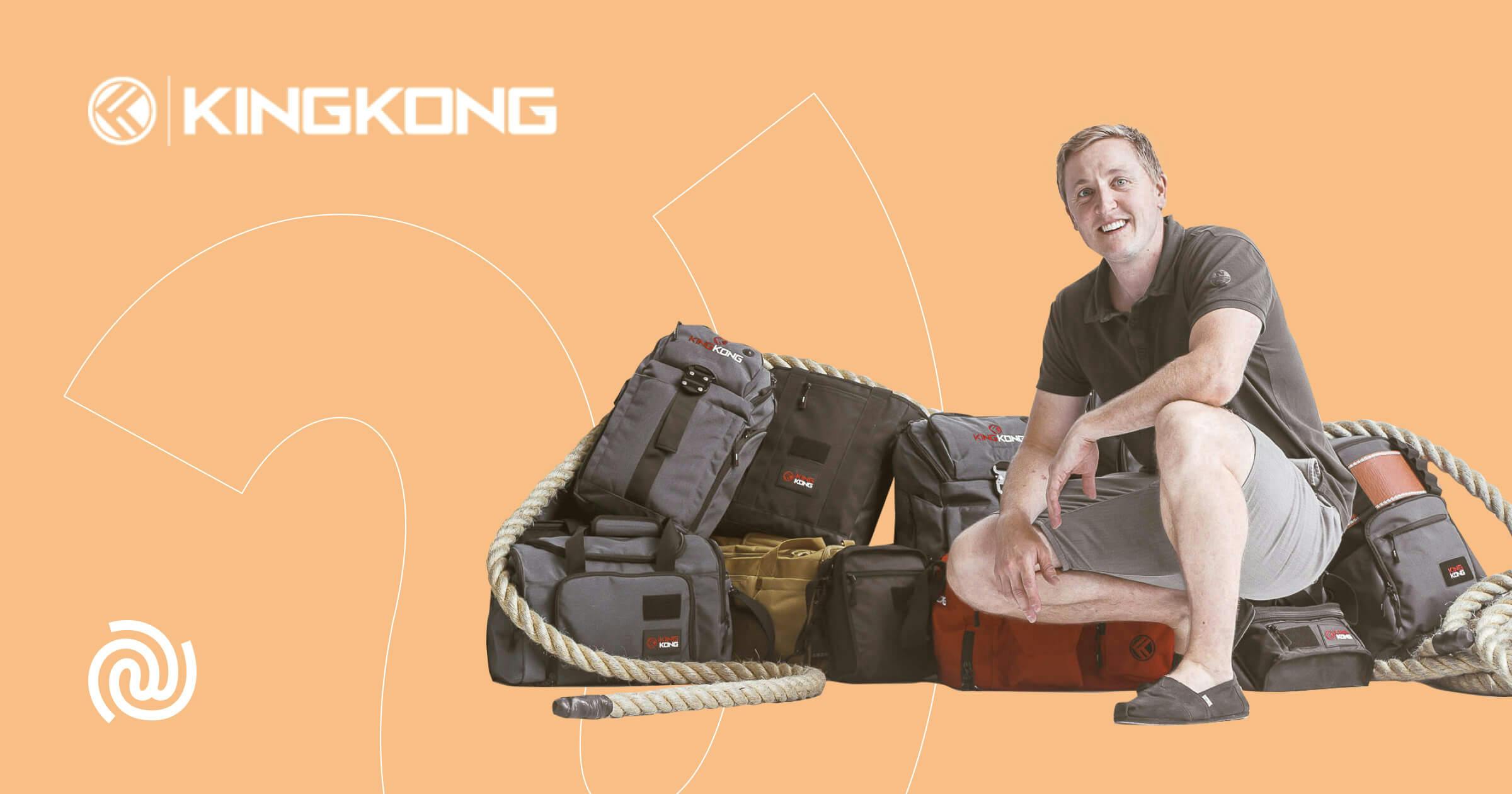If you haven’t started inventory planning for Q4, here’s how to catch up
Alex Stewart
May 19, 2022
Inventory
For an eCommerce founder these days, just getting an inventory order filled by the manufacturer and shipped to your customers takes monumental levels of patience and planning. My own eCommerce company placed an order with our factory in China back in December. Those goods finally arrived at a U.K. port in May — five months later — and well beyond our anticipated two-month timeline for order fulfillment.
We’d already anticipated the year to be filled with inventory management challenges for eCommerce brands, and unfortunately, those predictions have all come true. As we hurtle towards peak season in Q4, we’re helping founders come up with a game plan to navigate these increasingly complex logistics. There’s a great opportunity to capitalise on customer demand — but you have to be ready to do so.
Don’t wait any longer to catch up on inventory planning for Q4 and the holiday season. Start forecasting sales now and place your inventory orders by June so you can get ahead of any supply chain snags.
Understand the supply chain issues beyond your control
There are loads of risk factors outside your control that can and will slow down your order fulfillment for the busiest time of year. You might usually be able to comfortably wait until the first week of October to place orders for holiday inventory. But if you do so this year, you’ll be at major risk of freight delays and losing production slots at your factory.
Here’s an overview of the main supply chain challenges that are already impacting Q4 inventory planning:
- Shipping delays still haven’t cleared up: According to Supply Chain Dive, the outlook for the global shipping industry isn’t expected to improve this year. In fact, industry stakeholders expect backlogs to continue into 2023.
- Russia’s war with Ukraine is also disrupting freight: In Europe, rail freight seemed like it could be a workable alternative to shipping. In fact, according to Bloomberg, rail shipments to Europe from one port in China grew 70% in the first two months of the year. But then came Russia’s war with Ukraine. Now, one of Europe’s largest freight forwarders isn’t accepting rail cargo from China to Europe. Even if your eCommerce business was never considering rail freight, you might still be impacted. As freight forwarders instead switch from rail to sea routes, it will only add to the shipping logjams.
- Factory shutdowns are always a concern: Due to a recent rise in COVID cases, the Chinese government is enforcing more lockdowns, most notably throughout the Shanghai region. Every time there’s a surge in COVID cases, there’s a risk that localised lockdowns affect the region where your factory is based. You’ll face production delays and potentially lose your production slot.
As these factors compound, what should be comfortable timelines for getting inventory ordered and out to customers are instead stretching into four- or five-month ordeals. Those delays are way too long for you to meet peak demand at the end of the year, and your sales will suffer if you don’t have stock on hand ahead of time.
eCommerce companies that have a footprint with retailers risk more than just fewer sales opportunities. When a retailer tries to place a re-order, they want that stock right away so they can stock shelves and cash in on their end. They won’t be willing to wait several months for you to fulfill their orders. You risk harming those relationships if you don’t keep enough stock on hand, especially as we get closer to the end of the year and retailers feel more optimistic about foot traffic in their stores.
But while you can’t do anything about the ongoing supply chain challenges, you can take steps to make your business more resilient. Properly plan for a successful Q4 so that you have enough stock on hand for your own customers and your retail partners.
Forecast sales to accurately predict year-end demand
Before you can order your Q4 inventory, you need to know how much inventory is enough. Take measures to forecast your demand for the rest of the year so you can place the inventory orders to match.
If direct-to-consumer (DTC) is your primary channel, look back at data from previous holiday seasons to uncover repeating trends and order volumes. You can also look over your sales data and trends throughout the year to anticipate what your demand will be and identify how much growth you might have year-over-year.
Factor in your marketing attribution as well, accounting for metrics like customer acquisition cost and return on ad spend. You might see an increase in sales by uplifting your spend on channels like paid search or Facebook ads. If you know you’re going to be spending more on advertising as the holiday season approaches, make sure you’re accounting for that potential uplift in your forecasting.
If you know you’re going to be spending more on advertising as the holiday season approaches, make sure you’re accounting for that potential uplift in your forecasting.
And finally, don’t leave out other channels you might sell through, like Amazon, retailers, and even B2B partners. Companies who order in bulk from you for their corporate gifting needs might typically wait until Q4 to place those orders. You can’t wait for them to place those orders this year, as it will be too late for them to be filled. Instead, reach out to your partners across these channels by the end of Q2 and let them know you’ll be finalising inventory orders for the end of the year. Start those conversations now and ask how much stock they anticipate ordering from you for the holidays.
Place fewer inventory orders — but order more stock
Order with less frequency throughout the year but in higher volumes when you do. You’ll keep enough stock on hand to meet seasonal peaks in demand in Q4.
Every eCommerce business is different, but typically, a brand may have placed inventory orders four times throughout the year. Without constant supply chain issues, you could carry enough stock to meet the demand for the current quarter, then re-order as needed. You’d usually place your biggest inventory order a couple of months before your peak season or by October to meet the demand for the holidays.
But now, even 10-week timelines to fulfill orders are no longer realistic or comfortable for eCommerce brands to operate on — and that’s already factoring in some cushion for delays. We’re seeing months-long factory backlogs and freight delays this year. You need more stock on hand at a time so you can last until your next shipment comes through.
We recommend that eCommerce companies adjust and order inventory twice a year instead. Place your order for the first half of the year in December, so you can get production completed before the Lunar New Year. Then, place another order in June with your inventory for the second half of the year. That June order should contain all of your Q4 and holiday stock, based on the sales forecasting you completed.
You’ll gain some peace of mind so that even if there are delays or factory backlogs, you’ll still have high volumes of stock coming into your fulfillment house by early November at the latest. That’s right when holiday demand ramps up and brands see an uptick in sales, so you’ll be in a great position to fill those orders and generate revenue to close out the year — even with the inventory management challenges you may face.
Manage larger up-front investments with revenue-based financing
Larger inventory orders require bigger up-front investments from eCommerce brands. And you have to wait longer before you see a return because you’re ordering so far ahead of the holidays. Turn to revenue-based financing to successfully manage your cash flow and ensure you have the capital to order your stock on time.
Supply chain issues are a very real problem for eCommerce companies. But the larger issue at stake here is when a brand doesn’t have the financial flexibility to withstand those challenges. Revenue-based financing gives you that flexibility by basing your remittances on a percentage of your daily sales. You can use the funding to finance a bulk inventory order and your remittance figure is based on what you sell every day.
Traditional banks and debt financing will put too much strain on your cash flow if you rely on those options to catch up on inventory for Q4 and avoid a backlog. You’ll have to make flat repayments every month from June or July on, well before peak season — and before your sales pick up.
Wayflyer gets you access to funding quickly so you can get your orders in immediately and avoid a crunch at the end of the year. Our flexible remittance schedule frees up your cash flow management, making it easier for you to navigate inventory planning and logistics even in today’s challenging environment. And we deliver detailed insights to accelerate growth — especially at peak season.
Get funded now, so you can place your inventory orders on time and make sure you’re well-stocked for the holidays.


